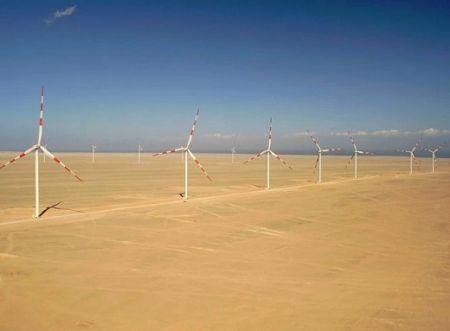
- Egypt opened Africa’s largest wind farm, raising Gulf of Suez capacity to 912.5 MW.
- Pro-investor policies have driven Egypt’s 340% renewable energy growth since 2015.
- Despite vast wind potential, most African nations lag due to weak regulatory support.
Egypt officially inaugurated what is being called Africa’s largest wind farm, the Gulf of Suez Wind Farm II (650 MW), with its commercial launch on Monday, June 30. This cements the nation’s status as the continent’s leading hub for onshore wind power. Developed by Eurus Energy, Toyota Tsusho, Engie, and Orascom Construction, the project’s massive turbines bring the combined capacity of Gulf of Suez I and II to 912.5 MW.
Continuing this momentum, Norway’s Scatec is already preparing a new 900 MW site at Ras Shukeir. While Egypt’s natural wind potential is undeniable, with average wind speeds at the Gulf of Suez and Ras Shukeir reaching up to 10.5 meters per second, according to EnergyPedia, the real advantage lies in a business climate carefully designed to reassure investors.
The foundation for this success was laid by the 2014 Renewable Energy Law. This legislation introduced feed-in tariffs guaranteeing above-market purchase prices over 20 to 25 years. These contracts, coupled with mandatory offtake provisions and bankable power purchase agreements (PPAs) signed with Egypt’s national transmission company (EETC), have created exceptional investor appeal. As a result, between 2015 and 2020, Egypt’s installed renewable energy capacity surged by 340%, rising from 887 MW to over 3,000 MW, according to the Carnegie Endowment for International Peace.
This regulatory framework is reinforced by a wide array of financial tools, including green bonds, concessional loans, and debt swaps. These are backed by tight coordination among the central bank, relevant ministries, and multilateral partners such as the World Bank and the International Finance Corporation (IFC).
At the continental level, the contrast is stark. The IFC estimates Africa’s technical wind potential at 33,642 gigawatts (GW), enough to meet the continent’s current electricity demand 250 times over. North Africa alone accounts for more than half of that, with 18,822 GW, including 6,191 GW in Algeria and 2,319 GW in Egypt. Yet, it is Egypt that has already installed nearly 2,855 MW, according to the Global Wind Energy Council, driven by a clear and ambitious national strategy.
Algeria, by contrast, has barely tapped into its massive resources. The same applies to Mauritania, which has a potential close to 4,000 GW, but where major industrial-scale projects have yet to materialize.
The clear takeaway for Africa is that strong winds alone are not enough. Without a unified vision, clear rules, and a robust financial architecture, the continent’s immense potential will remain largely untapped. To convert the estimated 461 GW into tangible projects, other countries could look to Egypt’s example, which includes regulatory clarity, risk-sharing mechanisms, streamlined procedures, and bold industrial partnerships.
Written in French by Abdoullah Diop,
Translated and adapted into English by Mouka Mezonlin











Comments